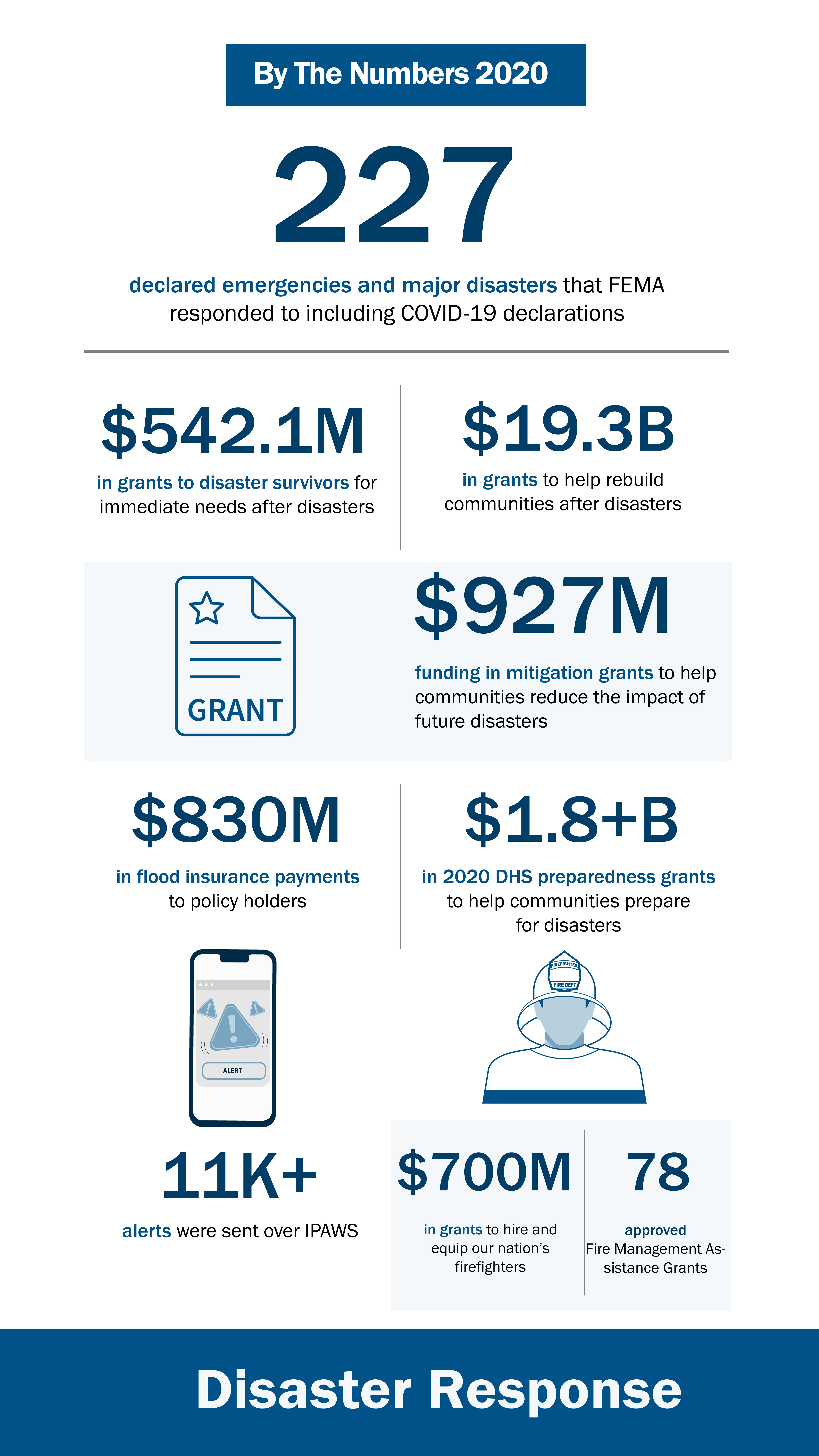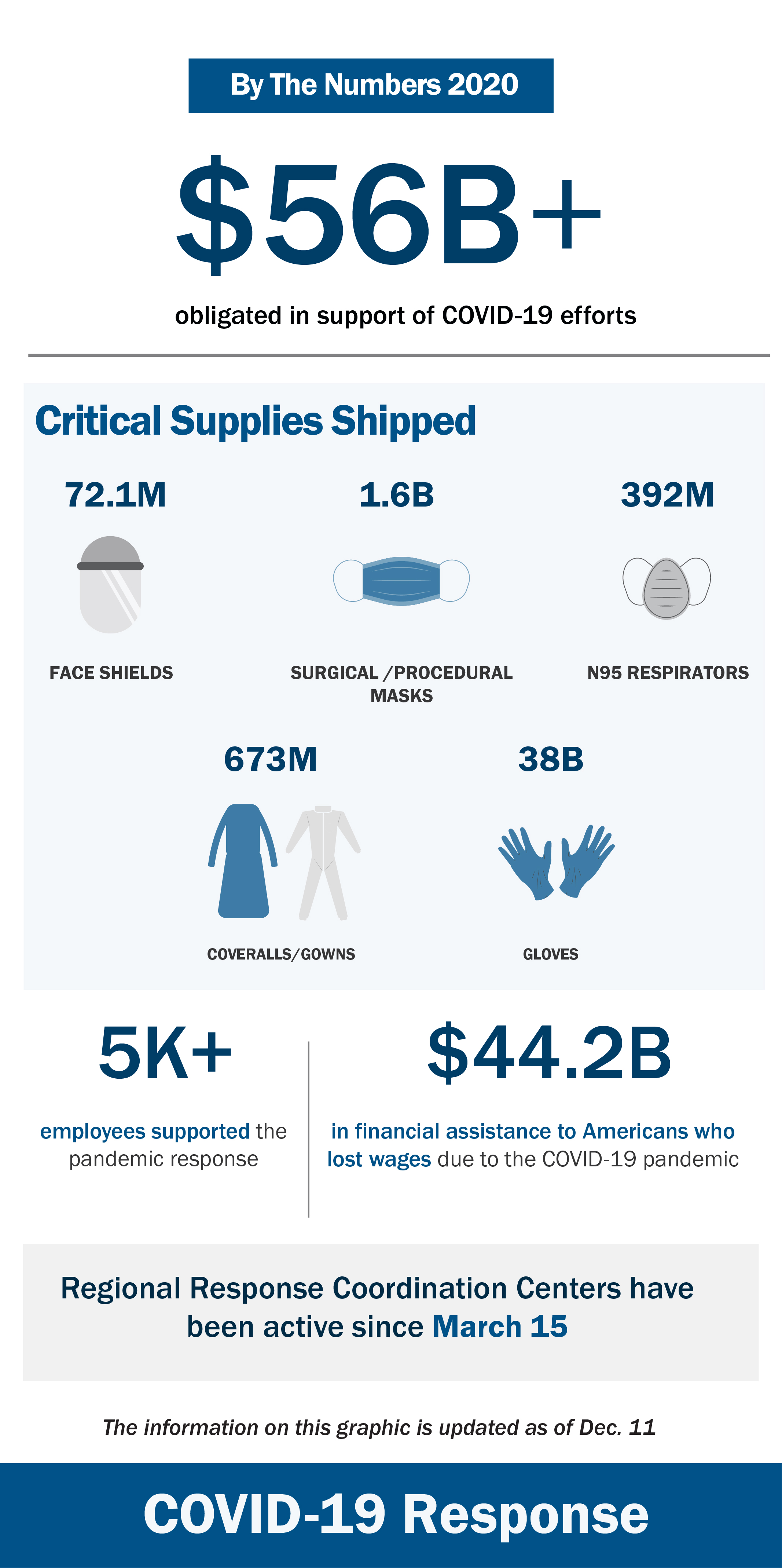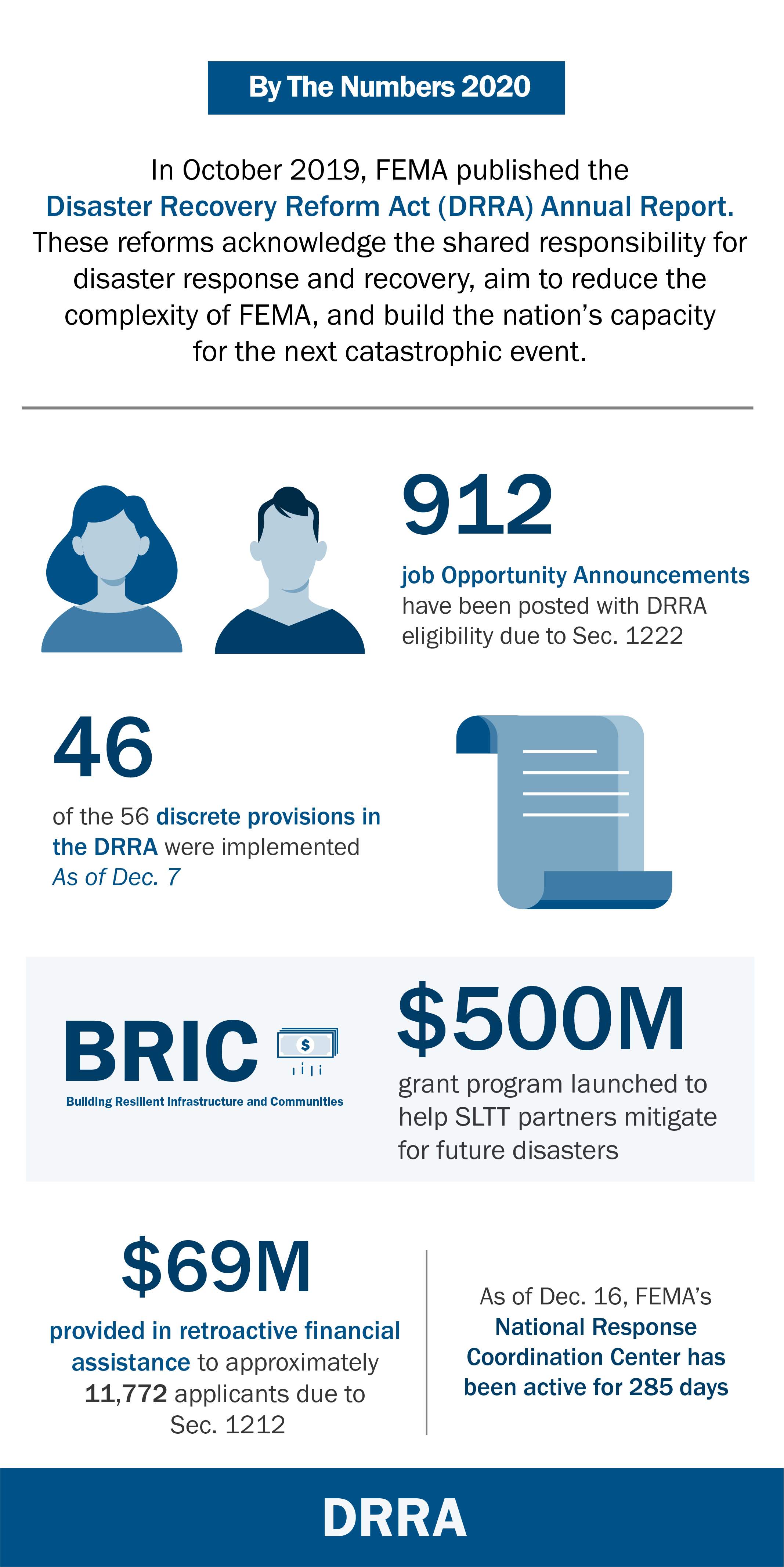On Jan. 7, a 6.4 magnitude earthquake rattled Puerto Rico and launched FEMA into action. This would set the tone for emergency management in 2020. What followed was a worldwide pandemic, widespread wildfires and a historic hurricane season. Through it all, FEMA has continued to prepare the nation for future disasters and help it recover from those it has already faced.
The funds, people and assistance that fueled response efforts in 2020 are extensive. The numbers in the graphics below represent just some of the results of these efforts.

Pandemic Response
In one way or another, the pandemic has affected us all. Businesses, states, individuals, all had to find new ways to do their usual, day-to-day activities. They rose to meet these new challenges in creative and unique ways. Many stories of how communities came together to implement innovative solutions to these challenges are shared on FEMA’s COVID-19 best practice page, which compiles best practices and lessons learned throughout the pandemic response.
FEMA has also had to adjust and innovate to meet these new challenges. For the first time, all 50 states, the District of Columbia and 5 territories were approved for major disaster declarations, something that FEMA had not seen before. New flexible and quick action was needed that reached deep into our response plans for every possible disaster. We collaborated with state, local, tribal and territorial partners on the emergency response challenges faced during operations in a pandemic environment. We also worked together to provide critical supplies and support to the American people.

Disaster Recovery Reform Act
The challenges faced this year remind us why it’s so important for the nation to be ready for any catastrophic event. This is why the Disaster Recovery Reform Act (DRRA) of 2018 was first signed into law. This year, FEMA continued to implement the act and work to reduce the complexity of the agency.
Millions were provided in retroactive financial assistance and to mitigation grants. FEMA also launched the Building Resilient Infrastructure and Communities grant, which provides $500 million to help state, local, tribal and territorial partners mitigate for future disasters.

This year has tested and solidified the resilience of Americans and the ability of FEMA to hold up the nation. As we close out the year, FEMA remains as prepared as always to carry out our mission of supporting people before, during and after disasters.
A previous version of this blog post included a graphic that indicated incorrect funds for firefighter grants. This version has been updated to reflect that correction.


